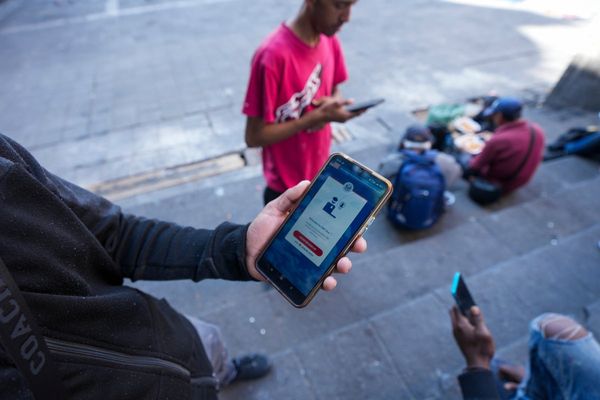The Federal Reserve's primary inflation rate, the core PCE price index, rose more than expected in February, even before the impact of Trump tariffs. S&P 500 futures are pointing slightly lower on Friday morning, as markets turn their focus from inflation to the further ratcheting up of tariffs and their economic fallout.
Inflation is a secondary concern after Fed Chairman Jerome Powell said that policymakers expect the impact of Trump tariffs on prices to be transitory. Despite raising their inflation outlook at the March 19 Fed meeting, policymakers kept their outlook for 50 basis points in rate cuts this year amid expectations for slower growth and higher unemployment.
8:51 a.m. ET
Why Did Personal Income Jump?
The Bureau of Economic Analysis attributed the jump in personal income to several things. An increase in government social benefits primarily reflected premium tax credits for health insurance purchase through the Affordable Care Act insurance marketplaces.
Officials also noted an increase in business payments to households, reflecting settlements from a domestic medical device manufacturer and a social media company.
Further, aggregate wages and salaries rose 4.4% on the month.
8:45 a.m. ET
Unrounded PCE Data Look Slightly Better
The inflation data looked slightly better when unrounded to a tenth of a percentage point. The core PCE price index rose 0.365% on the month, raising the 12-month core inflation rate to 2.789%.
8:44 a.m. ET
Futures Extend Losses
S&P 500 futures declined 0.4%. The 10-year Treasury yield is just below 4.31%.
8:39 a.m. ET
Personal Income And Spending
Personal income jumped 0.8% on the month, doubling 0.4% forecasts. Personal spending rose 0.4%, a touch below 0.5% estimates. Real spending, which is adjusted for inflation, climbed just 0.1%.
Spending on goods rose 0.9%, bouncing back from a 1.7% decline in January. Spending on services slowed to 0.2% from 0.4% in January.
8:37 a.m. ET
PCE Inflation Data
The overall personal consumption expenditures price index rose 0.3% in February, in line with forecasts. The 12-month PCE inflation rate held at 2.5%, as expected. But The core PCE price index, which strips out volatile food and energy prices, rose 0.4%, above 0.3% forecasts. The 12-month core inflation rate ticked up to 2.8% from the previously reported level of 2.6% in January, above 2.7% expectations. January's core inflation rate was revised higher to 2.7%.
8:34 a.m. ET
S&P 500 Futures Fall
S&P 500 futures fell 0.3%, slightly extending slim gains after the core PCE inflation reading. The 10-year Treasury yield was at 4.32%, down five basis points from Thursday but little changed after 8:30 a.m. ET.
PCE Inflation Expectations
Economists expect a 0.3% increase in both the overall personal consumption expenditures price index and the core PCE price index, according to the Econoday consensus. That's expected to leave the headline inflation rate at 2.5%, while the 12-month core inflation rate ticks up to 2.7% from 2.6%.
Personal income is expected to rise 0.4% in February, while personal consumption expenditures rise 0.5%.
Fed Rate Cut Outlook
Markets are pricing in just 13% odds of a rate cut at the May 7 Fed meeting, according to CME Group's FedWatch tool. However, odds of a rate cut jump to 63% for the June 18 Fed meeting.
For the full year, markets are on the fence as the whether the Fed will cut by 50 or 75 basis points, with 52% odds of three quarter-point cuts.
S&P 500
S&P 500 futures are off 0.1% ahead of the Fed's key inflation report in early Friday stock market action. The S&P 500 is trying to avoid a three-session losing streak, after turning lower on Wednesday's news that President Trump will hit imports of autos and auto parts such as engines with 25% tariffs, including those produced in Canada and Mexico.
Be sure to read IBD's The Big Picture column after each trading day to get the latest on the prevailing stock market trend and what it means for your trading decisions.







